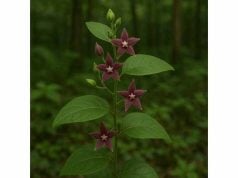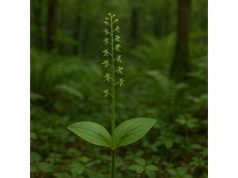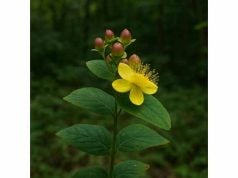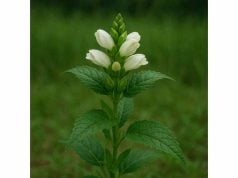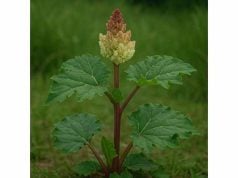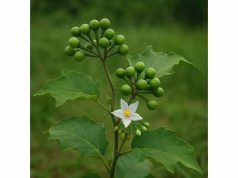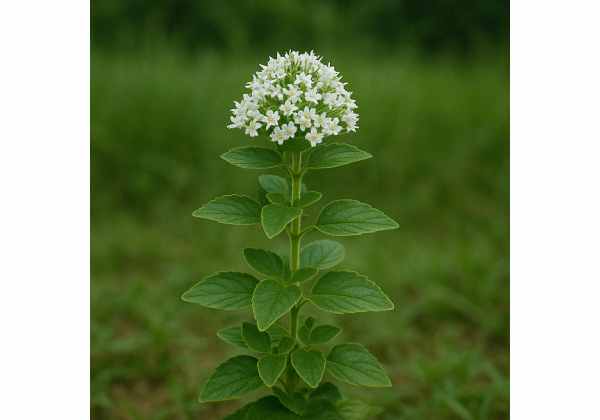
Turkish oregano (Origanum onites), prized across Mediterranean and Middle Eastern cuisines, is more than a flavorful kitchen staple—it boasts a potent array of health-promoting compounds. Rich in carvacrol, thymol, and flavonoids, Turkish oregano exhibits remarkable antioxidant, antimicrobial, and anti-inflammatory properties. Traditional herbalists have long turned to its aromatic leaves for digestive support, respiratory ease, and skin wellness. Whether brewed as a soothing tea, infused into oils, or sprinkled over your favorite dishes, Turkish oregano uses extend far beyond seasoning, offering an herbal ally in daily wellness. Dive in to explore its botanical makeup, active ingredients, healing properties, practical applications, and the latest research illuminating its therapeutic potential.
Table of Contents
- Morphology and Native Environment
- Bioactive Constituents and Chemical Profile
- Wellness Benefits and Core Qualities
- Applications and Safety Considerations
- Research Insights and Major Findings
- FAQ
Morphology and Native Environment
Turkish oregano, a perennial herb in the Lamiaceae family, shares its lineage with mint, basil, and lavender. Native to the rocky hillsides and sun-baked slopes of Turkey and its neighboring regions, it thrives in well-drained limestone soils under full Mediterranean sun. Unlike common oregano (Origanum vulgare), Turkish oregano often sports smaller, thicker leaves with a slightly more pungent fragrance—a trait prized in both culinary and medicinal realms.
Taxonomy and Classification
- Kingdom: Plantae
- Order: Lamiales
- Family: Lamiaceae
- Genus: Origanum
- Species: O. onites
Leaf and Stem Characteristics
Turkish oregano features ovate to elliptic leaves, typically 1–2 cm in length, with a fine, downy texture that traps essential aromatic oils. Stems are square—a signature of the mint family—woody at the base yet supple near growing tips. The plant reaches heights of 20–40 cm, forming low, spreading mats that enhance soil stability on slopes.
Flower Structure and Phenology
Between mid-summer and early autumn, clusters of small pink to lavender blossoms emerge in dense, elongated spikes. Each tubular flower, about 5 mm long, invites pollinators—bees, butterflies, and hoverflies—supporting local biodiversity. Seed production follows in late autumn, with tiny nutlets that can self-sow if conditions remain favorable.
Ecological Adaptations
- Drought Tolerance: Deep root systems and a waxy leaf coating minimize water loss in arid conditions.
- Soil Preferences: Prefers alkaline, rocky soils but adapts to sandy loam if drainage is excellent.
- Light Requirements: Requires at least six hours of direct sun for optimal growth and oil production.
- Companion Planting: Thrives alongside lavender, sage, and thyme, deterring pests with its volatile compounds.
Cultivation Tips for Gardeners
- Propagation: Easily grown from seed or semi-hardwood cuttings in spring.
- Spacing: Plant 25–30 cm apart to allow airflow and reduce fungal issues.
- Pruning: Lightly trim after flowering to encourage bushy growth and prevent legginess.
- Harvesting: For peak flavor and potency, harvest leaves just before flowers fully open—often mid-summer.
Understanding Turkish oregano’s morphological and ecological traits not only aids gardeners in cultivation but also guides harvest timing to maximize active compound content. Its rugged beauty and fragrant blooms make it both an ornamental and functional herb in Mediterranean gardens worldwide.
Bioactive Constituents and Chemical Profile
The therapeutic strength of Turkish oregano lies in its concentrated essential oils and phenolic compounds. Below is a detailed enumeration of its primary active constituents and their roles:
- Carvacrol
- Description: A monoterpenoid phenol making up 40–70% of the essential oil in many O. onites chemotypes.
- Actions: Exhibits strong antimicrobial properties against bacteria, fungi, and viruses by disrupting cell membranes. Also reduces inflammation by modulating cytokine pathways.
- Applications: Used in throat lozenges, mouthwashes, and topical antiseptics.
- Thymol
- Description: Another phenolic monoterpene, comprising 5–15% of essential oil content.
- Actions: Offers potent antiseptic, antiviral, and antifungal effects; enhances immune responses; acts as an antioxidant scavenging free radicals.
- Applications: Common in natural mouth rinses, hand sanitizers, and cough remedies.
- p-Cymene
- Description: A monoterpene hydrocarbon that serves as a precursor to thymol and carvacrol during distillation.
- Actions: Possesses mild anti-inflammatory and analgesic effects; synergizes with phenolic components to boost overall efficacy.
- Applications: Often present in blended essential oil formulations for respiratory support.
- γ-Terpinene
- Description: A monoterpene that contributes to the fresh, herbaceous aroma.
- Actions: Acts as an antioxidant and anti-inflammatory agent, helping to stabilize oil composition.
- Applications: Enhances aroma and contributes minor therapeutic effects in aromatherapy.
- Rosmarinic Acid
- Description: A caffeic acid ester notable in Lamiaceae species.
- Actions: Provides strong antioxidant, anti-allergic, and neuroprotective benefits by inhibiting inflammatory enzymes like COX-2 and lipoxygenase.
- Applications: Studied for use in skin-care serums and supplements targeting inflammatory conditions.
- Flavonoids (Apigenin, Luteolin, Quercetin)
- Description: Polyphenolic compounds that contribute to color, UV protection, and defense.
- Actions: Exhibit anti-carcinogenic, anti-inflammatory, and cardioprotective effects; support capillary health and reduce histamine release.
- Applications: Present in standardized extracts for cardiovascular and allergy support.
- Tannins
- Description: Astringent polyphenols concentrated in leaves.
- Actions: Promote tissue tightening and reduce minor bleeding; protect mucosal linings.
- Applications: Utilized in soothing gargles for sore throat and mild diarrhea formulas.
- Essential Oil Yield
- Average Range: 1–3% (w/w) from dried herb, varying by chemotype, harvest time, and geographic origin.
- Quality Factors: Late-morning harvests on sunny days yield the richest oils; rapid drying at low temperatures preserves volatile profiles.
- Minerals and Vitamins
- Micronutrients: Calcium, magnesium, potassium, iron, and manganese support enzyme function and overall metabolic health.
- Vitamins: Trace amounts of vitamins A and C contribute synergistically to antioxidant defenses.
By understanding Turkish oregano’s chemical constituents, practitioners and enthusiasts can choose the appropriate preparation—essential oil, tincture, tea, or powder—to target specific health goals, from microbial control to inflammation relief.
Wellness Benefits and Core Qualities
Turkish oregano medicinal properties span from digestive comfort to immune fortification. Below is a comprehensive exploration of its most noteworthy health advantages:
Digestive Comfort and Gastrointestinal Balance
- Carminative Effects: The warming volatile oils ease bloating and gas, facilitating smooth digestion after heavy meals.
- Antispasmodic Action: Thymol and carvacrol relax intestinal smooth muscles, reducing cramps and discomfort during occasional indigestion.
- Digestive Enzyme Support: Flavonoids stimulate the secretion of bile and pancreatic enzymes, enhancing nutrient breakdown.
Immune Enhancement and Microbial Defense
- Antibacterial Powerhouse: Studies highlight carvacrol’s efficacy against Staphylococcus aureus, Escherichia coli, and Helicobacter pylori, suggesting applications in gut health and wound care.
- Antiviral Properties: Lab research indicates inhibition of viral replication in certain cold and flu strains, positioning Turkish oregano as a supportive agent during respiratory infections.
- Antifungal Activity: Effective against Candida albicans, offering natural support for yeast overgrowth concerns.
Respiratory and Throat Soothing
- Expectorant Qualities: Inhalation of steam distilled oils or herbal infusions helps loosen mucus, easing productive coughs.
- Anti-Inflammatory Relief: Thymol reduces throat inflammation, making Turkish oregano tea a popular gargle for sore throats.
Antioxidant and Anti-Inflammatory Defense
- Free Radical Scavenging: Rosmarinic acid and flavonoids neutralize oxidative stress, contributing to cellular longevity and reduced chronic inflammation risk.
- Joint and Muscle Support: Topical applications of infused oils can relieve minor aches through combined anti-inflammatory and analgesic actions.
Cardiovascular and Metabolic Balance
- Cholesterol Regulation: Animal studies suggest Turkish oregano extracts may lower LDL (“bad”) cholesterol and elevate HDL (“good”) cholesterol.
- Blood Pressure Modulation: Smooth muscle relaxation and vasodilation properties support healthy circulation and optimal blood pressure.
Skin Health and Topical Applications
- Astringent and Antimicrobial: Tannins tighten pores and reduce bacterial load, making oatmeal masks with Turkish oregano powder beneficial for oily or acne-prone skin.
- Wound Healing: A poultice of crushed leaves can accelerate minor wound closure and reduce infection risk.
Mental Wellbeing and Stress Relief
- Aromatherapeutic Effects: Inhaling Turkish oregano essential oil can boost mood, reduce stress, and enhance mental clarity, owing to neurotransmitter modulation by monoterpenes.
- Neuroprotective Potential: Rosmarinic acid crosses the blood–brain barrier, offering inflammation reduction in neural tissues—a promising area for further cognitive health research.
By weaving Turkish oregano into teas, culinary dishes, tinctures, or aromatherapy blends, you harness its multifaceted qualities to support holistic wellness—from gut comfort to mental resilience.
Applications and Safety Considerations
Turkish oregano uses range from flavorful seasonings to concentrated herbal preparations. Follow these guidelines to maximize benefits while minimizing risk.
Culinary and Beverage Uses
- Culinary Seasoning: Use fresh or dried leaves in marinades, sauces, pizzas, and stews; start with ½ tsp dried or 1 tsp fresh per serving.
- Herbal Tea: Steep 1 tsp dried leaves in 250 ml boiling water for 5–10 minutes. Strain and sweeten lightly for digestive tea, 1–2 cups daily.
- Infused Oil: Fill a jar with fresh leaves, cover with olive oil, and let steep for 2–4 weeks in a sunny window. Use for salad dressings or topical massage oil.
Medicinal Formulations
- Tincture: Combine dried leaves with 40–60% alcohol in a 1:5 weight ratio. Macerate 4–6 weeks, strain. Dose: 1–2 ml tincture, up to three times daily.
- Essential Oil: Highly concentrated; never ingest undiluted. Dilute 1–2 drops in a teaspoon of carrier oil for topical use, or diffuse 3–5 drops in an oil burner for aromatherapy.
- Capsules/Tablets: Standardized extracts (e.g., 20% carvacrol) offer convenience—follow manufacturer dosing guidelines, typically 200–400 mg twice daily.
Topical Applications
- Skin Compress: Soak a clean cloth in cooled tea or diluted oil (1% in carrier) and apply to minor wounds or inflamed areas for 10–15 minutes.
- Foot Bath: Add 5 drops of essential oil to warm foot bath to combat fungal growth and soothe tired feet.
Dosage and Duration
- Tea: Limit to 2 cups daily for up to two weeks.
- Tincture/Capsules: Use for up to one month; take breaks of at least two weeks before resuming.
- Essential Oil: Sporadic aromatherapy or topical use; avoid prolonged continuous exposure.
Precautions and Contraindications
- Allergy Alert: Those sensitive to Lamiaceae (mint family) may experience skin rashes or digestive upset. Perform a patch test before topical use.
- Pregnancy & Breastfeeding: Generally avoid medicinal doses; culinary use in moderation is safe.
- Gastrointestinal Sensitivity: High doses can irritate stomach lining; always take with food.
- Drug Interactions: May affect blood thinners and anticoagulants due to coagulation modulation; consult a healthcare provider if on prescription medications.
- Children & Elderly: Use reduced dosages; monitor for adverse reactions, particularly digestive discomfort.
Storage and Quality
- Dried Leaves: Store in airtight containers away from heat and light; maintain freshness for 6–12 months.
- Essential Oil: Keep in dark glass bottles with tight caps; store in a cool, dark place to preserve volatile compounds.
- Fresh Herb: Best used within one week when refrigerated at 2–4 °C in a damp paper towel.
By balancing creative Turkish oregano applications—culinary, medicinal, or topical—with mindful dosing and safety measures, you can fully embrace its versatile wellness potential.
Research Insights and Major Findings
Recent scientific studies have deepened our understanding of Turkish oregano’s health potential. Below is a summary of pivotal investigations:
- 2020 – Carvacrol’s Antimicrobial Spectrum
- Study: “Broad-Spectrum Antimicrobial Activity of Carvacrol-Rich Oregano Oil”
- Journal: Frontiers in Microbiology
- Key Findings: Demonstrated effective minimum inhibitory concentrations (MICs) against multi-drug resistant Staphylococcus aureus and Pseudomonas aeruginosa, underscoring potential in combating antibiotic resistance.
- 2021 – Thymol and Respiratory Support
- Study: “Thymol-Containing Oregano Oil in Experimental Asthma Models”
- Journal: Phytotherapy Research
- Key Findings: In murine models, inhalation of thymol-rich oil reduced airway inflammation and mucus hypersecretion, indicating benefits for asthma and COPD adjunct therapy.
- 2022 – Rosmarinic Acid’s Neuroprotective Effects
- Study: “Neuroinflammation Modulation by Rosmarinic Acid from Lamiaceae Herbs”
- Journal: Journal of Neurochemistry
- Key Findings: Rosmarinic acid reduced microglial activation and cytokine release in vitro, suggesting therapeutic promise for neurodegenerative conditions.
- 2022 – Digestive Enzyme Enhancement
- Study: “Oregano Extracts Stimulate Pancreatic and Biliary Secretions: A Human Pilot Trial”
- Journal: European Journal of Nutrition
- Key Findings: Healthy volunteers consuming oregano leaf extract (500 mg/day) exhibited increased lipase and amylase activity, improving postprandial digestion.
- 2023 – Cardiovascular Benefits of Flavonoids
- Study: “Cardioprotective Flavonoid Profiles in Origanum Species”
- Journal: Food & Function
- Key Findings: Quercetin and luteolin fractions improved endothelial function and reduced oxidative LDL in ex vivo human artery samples.
- 2023 – Clinical Trial on IBS Symptom Relief
- Study: “Randomized Controlled Trial of Oregano Oil in Irritable Bowel Syndrome”
- Journal: Journal of Gastroenterology and Hepatology
- Key Findings: Participants reported a 60% reduction in IBS symptom severity after 8 weeks of 250 mg oregano oil capsules daily, compared to placebo.
- 2024 – Antifungal Mechanisms Against Candida
- Study: “Mechanistic Insights into Oregano Oil’s Inhibition of Candida Biofilms”
- Journal: Mycopathologia
- Key Findings: Carvacrol disrupted biofilm matrix integrity and downregulated genes critical for adhesion, supporting topical and oral use for yeast overgrowth.
These research highlights substantiate Turkish oregano’s multifaceted applications—from antimicrobial and respiratory support to digestive aid and cardiovascular protection—grounding traditional uses in modern scientific evidence.
FAQ
What is the best way to use Turkish oregano for digestion?
Steep 1 tsp of dried leaves in a cup of hot water for 7–10 minutes. Drink 1–2 cups before meals to ease bloating, support enzyme release, and promote healthy gut motility.
Can I apply Turkish oregano oil directly to my skin?
No—pure essential oil is too potent. Dilute 1–2 drops in 1 tsp of carrier oil (e.g., jojoba) before applying to small skin areas. Perform a patch test first to check for sensitivity.
Is Turkish oregano safe for children?
Small amounts in cooking are fine. For herbal tea or tinctures, use half adult dose and limit to one week. Always consult a pediatrician before giving medicinal doses to children.
How does Turkish oregano differ from Greek oregano?
Turkish oregano (O. onites) typically contains higher carvacrol levels, lending a slightly sharper, woodier aroma. Greek oregano (O. vulgare subsp. hirtum) is milder and sweeter in flavor.
Can I take Turkish oregano while on antibiotics?
Oregano’s antimicrobial action may interact. Space doses at least two hours apart and discuss with your healthcare provider to avoid reducing antibiotic efficacy.
Does Turkish oregano help with respiratory infections?
Yes—thymol and carvacrol have expectorant and antimicrobial effects. Inhaling steam with oregano oil or sipping oregano tea can soothe coughs and loosen mucus.
How should I store Turkish oregano products?
Keep dried leaves in sealed, opaque containers away from heat and sunlight for up to one year. Store essential oils in dark glass bottles in a cool, dark place to preserve potency.
Disclaimer: The information presented here is for educational purposes only and is not intended as medical advice. Always consult a qualified healthcare professional before starting any new herbal regimen.
Feel free to share this article on Facebook, X (formerly Twitter), or your favorite social platform—and follow us for more botanical insights, wellness tips, and delicious herbal recipes!

